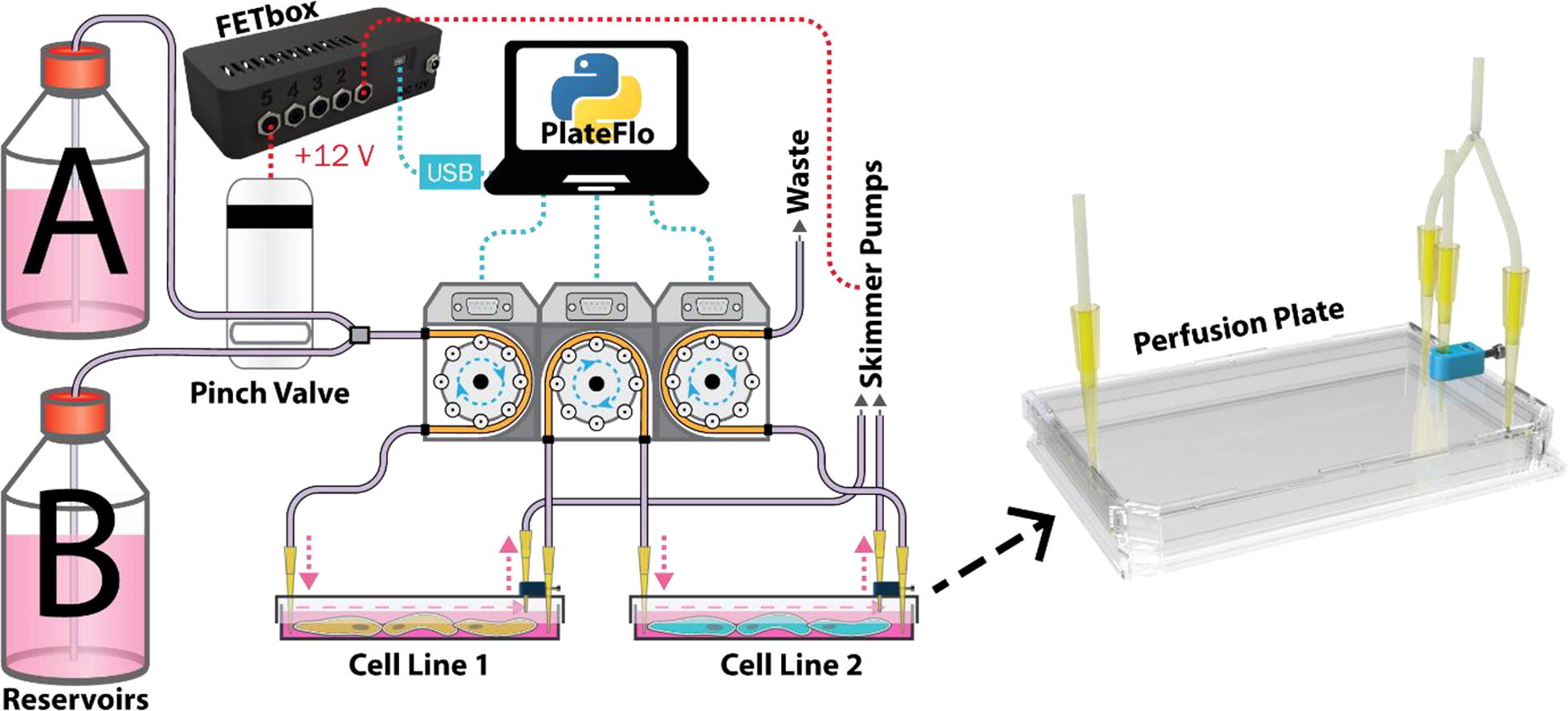PlateFlo is a versatile and low-cost system designed for the milliliter-scale perfusion culture of adherent cells. It can be built using basic tools and is based on a standard culture plate. The system allows programmatic control of media composition and flow paths via a USB interface, making it ideal for various laboratory applications including large-scale genetic screens and proteomics.
Key Features
- Affordable Design: The total cost for hardware is approximately €350, plus minimal consumable costs.
- Modular Components: The system allows for easy customization and integration with various electronic components.
- User-Friendly Control: Controlled via a Python package that interfaces with the hardware, allowing dynamic media conditions.
- High Throughput: Capable of perfusing up to six samples simultaneously, suitable for experiments requiring large cell numbers.
- Open Source: The system is designed with an open-source philosophy, making it accessible for modification and expansion.
Specifications
| Specification | Details |
|---|---|
| Device Name | PlateFlo Perfusion System |
| Cost | €350 |
| Culture Area | 84 cm² per well |
| Flow Rate | 0.1–10 mL/min |
| Power Supply | 12 V DC |
| Open Source License | GNU GPL v3 (software); CERN OHL-W v1.2 (hardware) |
| Source File Repository | OSF Repository |
Build Instructions
- 3D Print Components: Use provided STL files to print the necessary parts for the perfusion system.
- Assemble FETbox: Construct the FETbox hardware controller, which manages high-current devices.
- Modify the Culture Plate: Adapt a standard culture plate for perfusion by adding necessary inlets and outlets.
- Connect Electronics: Wire the pumps, valves, and sensors to the FETbox for control.
Operation Instructions
- Prepare the Culture Plate: Seed cells in the modified plate and connect it to the fluidics system.
- Set Parameters: Use the PlateFlo Python package to configure flow rates and media conditions.
- Start Perfusion: Begin the perfusion process, monitoring cell growth and media exchange dynamically.
Validation
The system has been validated for its ability to maintain stable and consistent perfusion flow rates, making it suitable for various cell culture applications.
PlateFlo offers a significant advancement in perfusion culture technology for adherent cells, combining affordability, modularity, and ease of use. Its open-source nature encourages collaboration and further innovation in cell culture practices.

